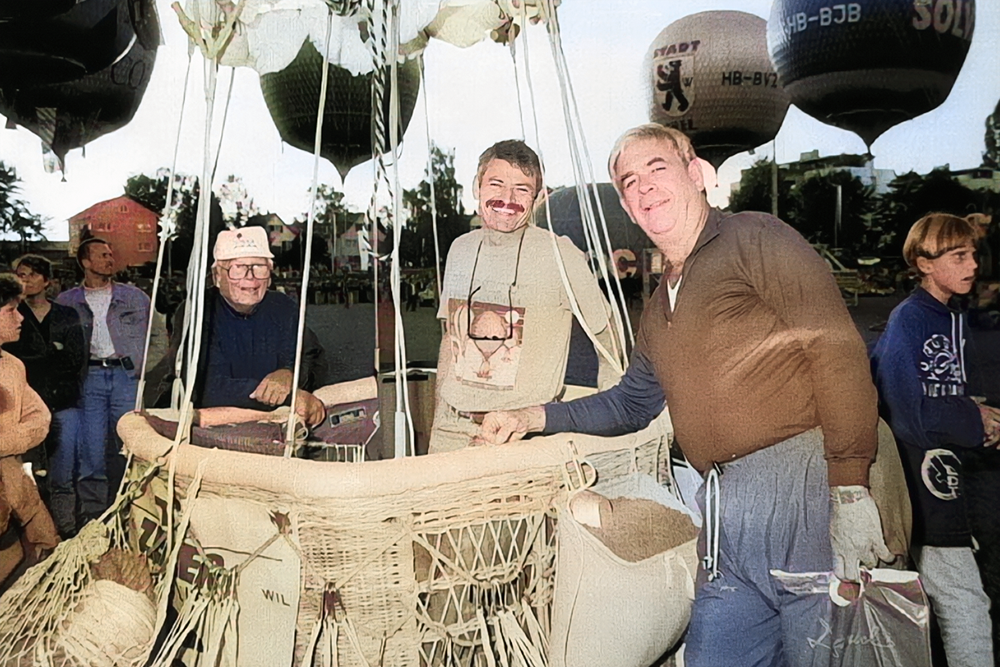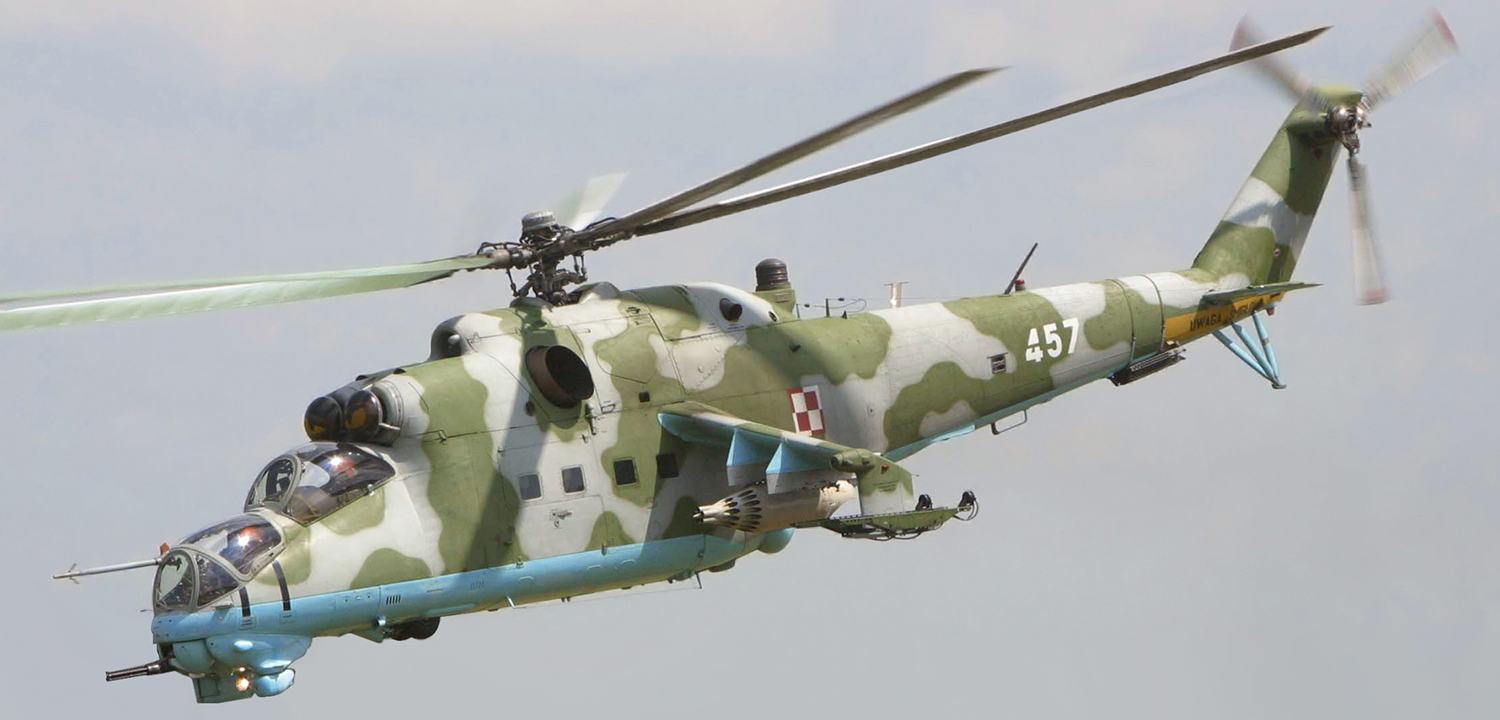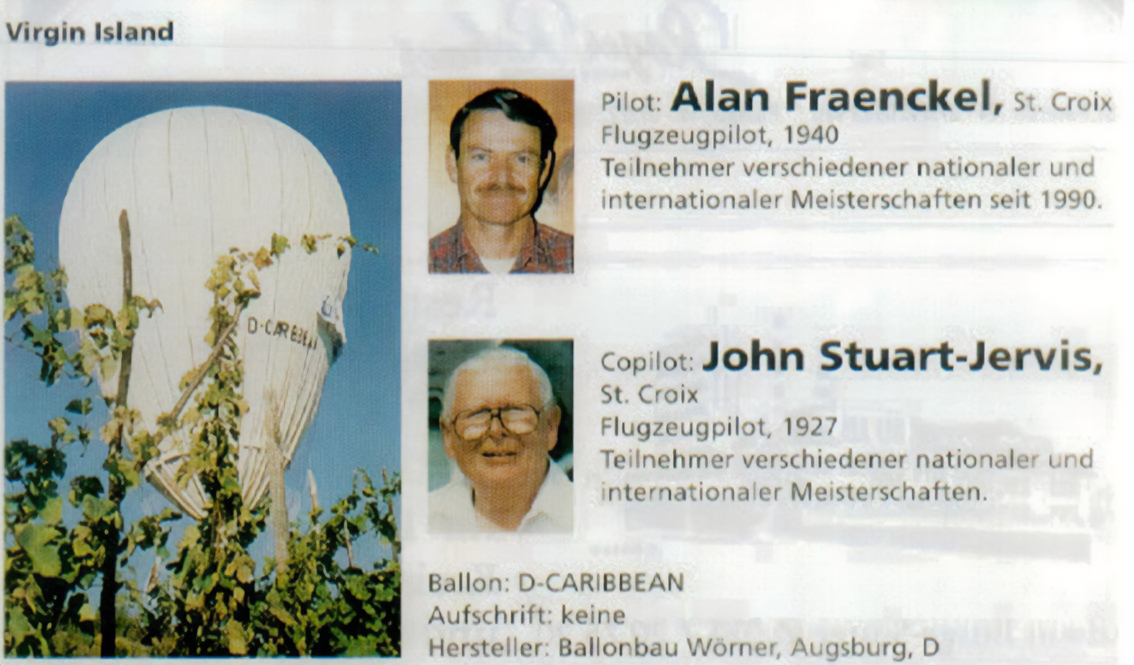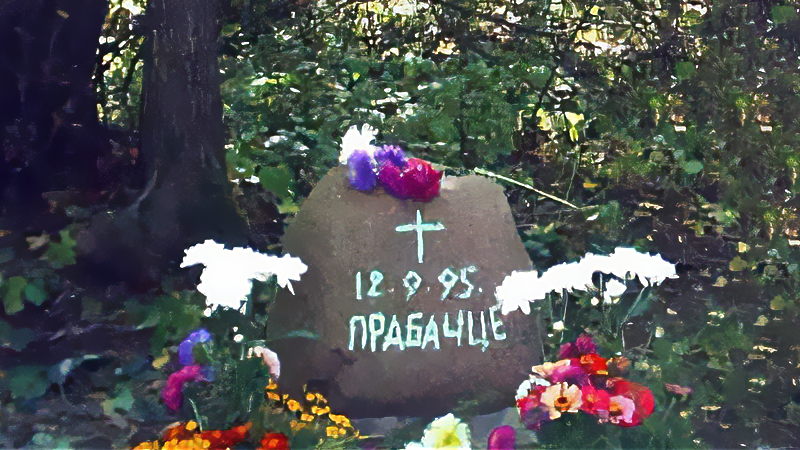Tragedy Over Belarus: Alan Fraenckel and John Stuart-Jervis
In the 1995 Gordon Bennett Balloon Race, American pilots Alan Fraenckel and John Stuart-Jervis tragically lost their lives when their balloon was shot down by the Belarus military, sparking a diplomatic dispute.

A terrifying incident took place on September 12, 1995, during the famous Gordon Bennett Balloon Race. Two American citizens, Alan Fraenckel and John Stuart-Jervis lost their lives in a chilling disregard for life. This event, which happened high above Belarus, sparked a significant diplomatic clash between the United States and Belarus. The Gordon Bennett Balloon Race, known for its thrill and danger, was marked by this devastating episode.

The Gordon Bennett Balloon Race (also called the Coupe Aéronautique Gordon Bennett), named after the millionaire sportsman and owner of the New York Herald newspaper, is a simple yet risky competition. The balloon flying the furthest from the starting point without landing wins. Despite the simplicity of its premise, the race has seen its share of life-threatening incidents, with the deadliest being the 1923 European race where lightning killed five balloonists and injured several others.
In 1995, the race began on September 9 in Wil, Switzerland, with 17 balloons lifting off. Among these were experienced pilots Alan Fraenckel, 55, and John Stuart-Jervis, 68.
Alan Fraenckel, originally from Schenectady, New York, was a senior pilot for Trans World Airlines. His love for aviation wasn't limited to his professional career; he was also an enthusiastic participant in balloon races, and this was his sixth time competing in the Gordon Bennett race.
His co-pilot, John Stuart-Jervis, had an equally adventurous background. A British-born American from Harwich, England, Stuart-Jervis had an eventful stint in the Royal Navy during World War II, having enlisted at just 15 by lying about his age. He had experience in various theatres of war, including the North Atlantic and Southeast Asia, and had even been shot down in battle. This race would be his third participation in the event.
The pair had met six years earlier at a cocktail party in St. Croix, in the U.S. Virgin Islands, where both resided. They quickly bonded over shared airborne adventures and a mutual interest in ballooning. This friendship soon led to them becoming a gondola team in balloon races
Their 1995 race journey saw them piloting a hydrogen balloon that was registered in Germany as D-Caribbean. Their balloon took them over Poland and, at dawn on September 12, they were enroute to Belarus. There was an air of anticipation and excitement as this was their first time flying over the newly independent former Soviet republics, including Belarus. They were even touted as potential winners of the race
However, their journey took a horrifying turn when their balloon flew over a military base in Belarus, which was unmarked on any known maps. According to race organizers, Belarusian authorities had been informed about the Americans' plans and had given clearance. Unfortunately, while flight controllers might have been aware, there seemed to have been no communication with the Belarusian armed forces.

Suddenly, a Belarusian Mil Mi-24 "Hind" helicopter gunship unexpectedly unleashed 20 rounds from its YakB 12.7 mm machine gun. The onslaught tore apart their 75-foot hydrogen-filled balloon. As a result, their balloon gondola plummeted 2,300 meters from the sky, crashing onto the forest floor near the village of Krugloye in Berezovskiy Rayon, Brest Oblast. The impact instantly killed both passengers.
The September 16, 1995, issue of Komsomolskaya Pravda shared a local story from the area near where the balloon was shot down. According to the report, Olga Nikolayevna, an elderly resident of Krugloye, believed a war had started again when she heard the helicopter firing at the balloon. In fear, she took cover under an apple tree. Her son Vasiliy, a retired senior warrant officer, was having dinner at the time. Upon hearing the gunfire, he assumed someone had gotten drunk, stolen a helicopter, and started shooting at the local homes.
Valery Kastenka, the former Belarusian Air Force commander who ordered the shootdown, defended his decision. He claimed that the balloonists failed to respond to radio calls and warning shots. This led him to mistake the balloon for an unmanned spying device. The retrieved black box confirmed that the balloonists had failed to contact Belarusian air traffic controllers as required, though it is believed that they were likely asleep at the time they crossed into Belarusian airspace.
After the downing of the balloon two other American balloonists participating in the race were forced to land in Belarus and faced fines of $30 each.

The reaction of Belarusian President Alyaksandr Lukashenka to the incident was inconsistent. At first, he stated it was a mistake, then denied having any role in the downing of the balloon. Subsequently, he altered his story, suggesting that the balloon was on a covert mission to gather intelligence on their military and industrial facilities.
Lukashenka's inconsistent response to the incident aligns with his reputation as an authoritarian leader. Since taking office in 1994, Lukashenka has been known for his tight control over all aspects of governance in Belarus. He has frequently been accused of human rights abuses, suppressing dissent, and curtailing freedom of press. His administration's obfuscating responses to the balloon incident can be viewed as a typical maneuver, reflecting his government's opaque, controlling, and frequently contradictory approach to managing both domestic affairs and international incidents. His allegation that the balloon was on a covert mission appeared to be an attempt to deflect blame and maintain control over the narrative.
The tragic incident was investigated by the Interstate Aviation Committee of the Commonwealth of Independent States (CIS), with representatives of the U.S. National Transportation Safety Board (NTSB) and German aviation authorities also participating.
The CIS report laid bare the series of mistakes and deviations from standard procedure that led to the tragic incident above Belarusian airspace in 1995. The report highlighted errors from both the Belarusian aviation authorities and the balloon's crew, contributing to the fatal misunderstanding.
The analysis began by noting that the balloon's unauthorized flight into Belarusian airspace occurred due to irregularities in how the Belarusian Air Traffic Organization managed incoming flight applications and departures, causing confusion around whether a permit had been granted.
The crew of the accident balloon were also faulted for their non-compliance with the air navigation requirements for Belarus airspace. This included maintaining radio contact, using onboard identification systems, and requesting the correct permits for entering the country's airspace.
Further, the report scrutinized the Belarusian Anti-aircraft Defense (AAD) for misidentifying and misclassifying the balloon. The personnel did not adhere to regulatory protocols when they detected the balloon. A combination of the balloon's irregular markings and the failure to use the international emergency frequency complicated the balloon's identification process. The existing regulations in Belarus were found lacking, especially for handling small-sized, low-speed targets like balloons.
In light of these findings, the Flight Safety Commission of the CIS Interstate Aviation Committee proposed amendments to the Belarusian aviation authorities. The recommendations included refining regulations for intercepting airspace-violating airships, with clearer guidelines for ground services and interceptor crews. The committee also urged for an update in the documents regulating the interaction between Air Traffic Organization and AAD services.
The committee further extended recommendations to the organizers of aeronautical sports competitions, suggesting a thorough revision of regulations for such flights. They proposed providing full air-navigation information to crews and drawing up additional requirements for airship markings.
Lastly, the committee called on the International Civil Aviation Organization (ICAO) to review and supplement its standards for handling balloons and other motorless flying machines. This includes amendments to interception regulations based on the insights gained from this investigation.
While it is not definitively known whether these specific recommendations from the CIS report were adopted, it's important to understand that such reports are generally taken very seriously in the international aviation community. Investigations of air accidents and subsequent reports often play a pivotal role in refining aviation safety measures. Organizations like the International Civil Aviation Organization (ICAO) frequently review and amend their standards and recommended practices based on these findings. Although it's unclear in this specific case if the recommendations were implemented, the larger goal of these reports is always to improve aviation safety and prevent future accidents.
Despite the severity of the tragedy, it did not lead to significant changes in the rules of the Gordon Bennett Balloon Race. According to the 2005 edition of the Model Event Rules for Coupe Gordon Bennett, "Pilots must be familiar with and abide by the applicable aviation regulations of the countries. Pilots may be required to log all ATC clearances given enroute … Infringements of Aviation regulations are in the first instance a matter between the pilot and the Aviation Authorities."

Regrettably, the victims' families have yet to receive an official apology or any form of compensation from Minsk for the incident. However, the tragedy resonated deeply with ordinary Belarusians, many of whom expressed sorrow and shame for their government's actions. On the first anniversary of the disaster, activists in Belarus erected a simple stone at the crash site bearing a cross, the date of the incident, and a poignant phrase in Belarusian: "Forgive us."
References and further reading
- Racing Baloon is Shot Down by Air Force Attack Hellicopter in Belarus - Flight Safety Foundation Accident Prevention, Vol. 53, No. 7
- 'Shoot It Down!': The Tragic Tale Of Two American Balloonists Over Belarus - Radio Free Europe
- Шары, мишки и диктатор: История о том, чего боится Лукашенко - Новая газета
- Als die weissrussische Luftabwehr zwei Gasballons vom Himmel schoss: Erinnerungen an den tragischen Gordon Bennett Cup in Wil - Tagblatt
